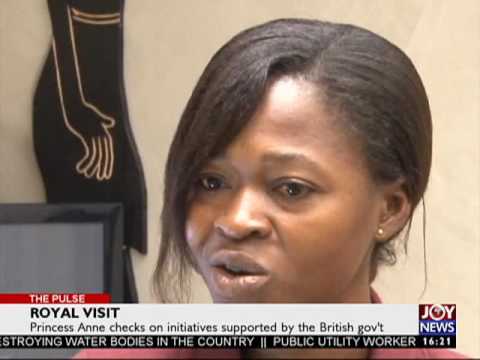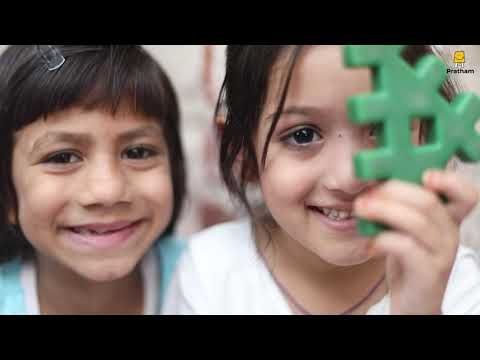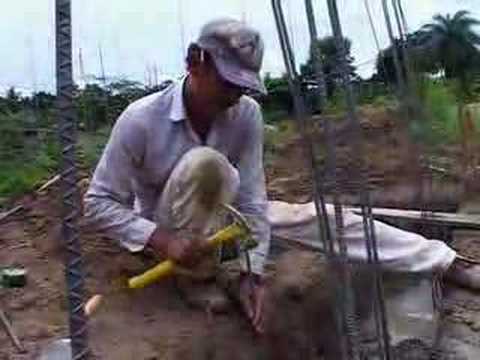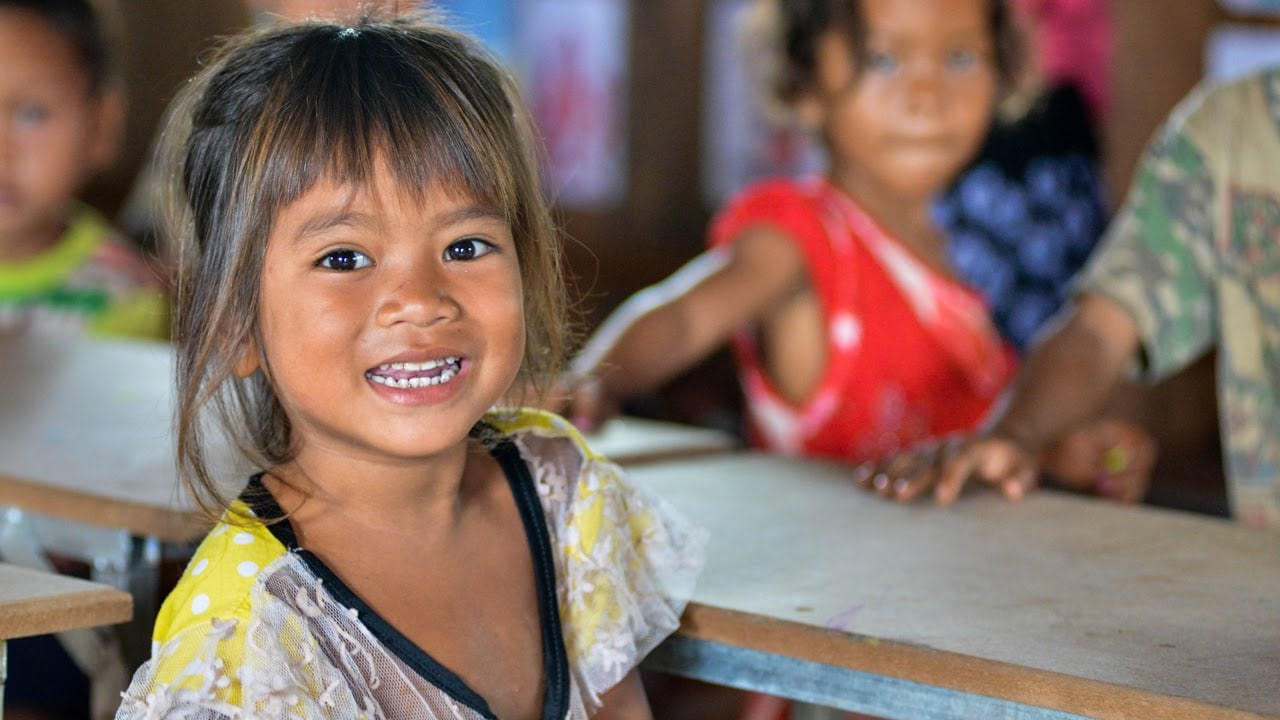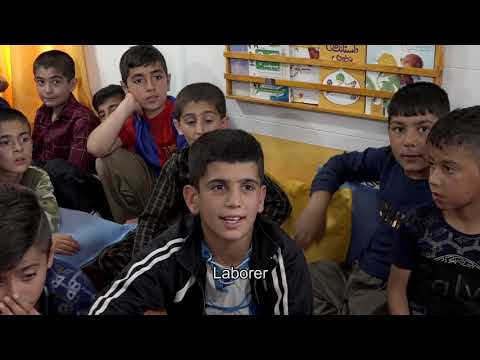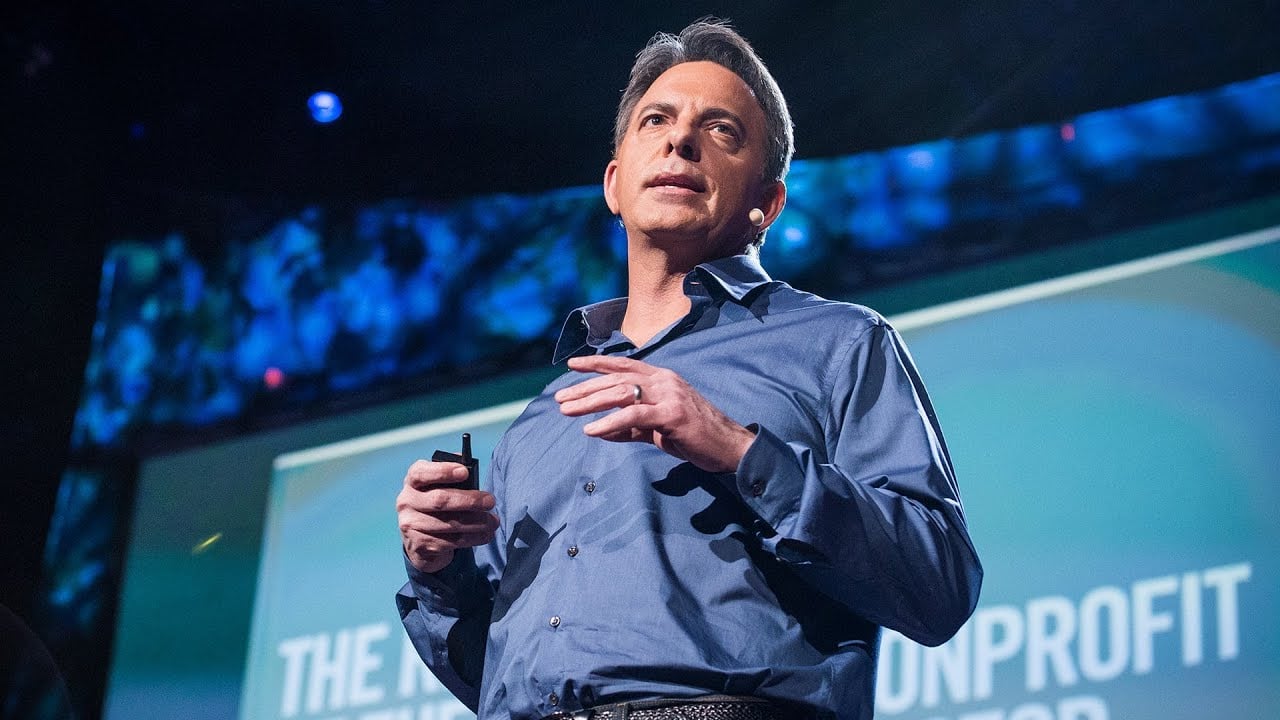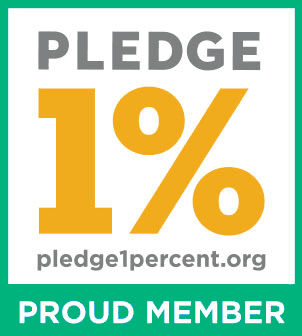10 Best Charities for Education in Developing Countries (Complete 2025 List)
Affiliate Disclosure
Hey fellow impactful ninja ?
You may have noticed that Impactful Ninja is all about providing helpful information to make a positive impact on the world and society. And that we love to link back to where we found all the information for each of our posts.
Most of these links are informational-based for you to check out their primary sources with one click.
But some of these links are so-called "affiliate links" to products that we recommend.
Why do we add these product links?
First and foremost, because we believe that they add value to you. For example, when we wrote a post about the environmental impact of long showers, we came across an EPA recommendation to use WaterSense showerheads. So we linked to where you can find them. Or, for many of our posts, we also link to our favorite books on that topic so that you can get a much more holistic overview than one single blog post could provide.
And when there is an affiliate program for these products, we sign up for it. For example, as Amazon Associates, we earn from qualifying purchases.
What do these affiliate links mean for you?
First, and most importantly, we still only recommend products that we believe add value for you.
When you buy something through one of our affiliate links, we may earn a small commission - but at no additional costs to you.
And when you buy something through a link that is not an affiliate link, we won’t receive any commission but we’ll still be happy to have helped you.
What do these affiliate links mean for us?
When we find products that we believe add value to you and the seller has an affiliate program, we sign up for it.
When you buy something through one of our affiliate links, we may earn a small commission (at no extra costs to you).
And at this point in time, all money is reinvested in sharing the most helpful content with you. This includes all operating costs for running this site and the content creation itself.
What does this mean for me personally?
You may have noticed by the way Impactful Ninja is operated that money is not the driving factor behind it. It is a passion project of mine and I love to share helpful information with you to make a positive impact on the world and society. However, it's a project in that I invest a lot of time and also quite some money.
Eventually, my dream is to one day turn this passion project into my full-time job and provide even more helpful information. But that's still a long time to go.
Stay impactful,
250 million children are being robbed of an education simply because of where they live. In addition, 400 million children of primary school age cannot read or write. As a result, the United Nations warned that if a better way isn’t found to finance education, over 800 million young people will leave school without the skills to get a job in 2030. So we had to ask: What are the best charities for education in developing countries?
The best charities for education in developing countries are Room to Read, the Varkey Foundation, and Pratham. Other charities, like Pencils of Promise, Seeds of Learning, and United World Schools, deliver high-impact educational models to the most underserved children in the world.
Whether you want to connect children from underprivileged countries with life-changing educational opportunities, support teachers with high-impact training, or help build schools in vulnerable places, there is a charity for you. Keep reading to learn more about what the best charities for education in developing countries are all about, how they work, and what would be your best way to make a contribution.
Here’s What All the Best Charities for Education in Developing Countries Have in Common
The charities on this list were chosen based on their mission, transparency ratings, and achievements.
They operate in developing countries around the world, especially from Asia, Africa, and South America, improving education and livelihoods.
Most of the charities below support education for youth in low-income countries to accelerate improvements in the nation’s economy, poverty rate, unemployment, and healthcare. For instance, they build schools and improve curriculums to offer children an appealing, engaging place to learn. They have also tailored educational programs for vulnerable girls and youth who had to drop out of school.
Also, they empower school teachers with training and innovative resources so that they can lead dynamic and effective lessons.
Yet, all the charities share the same goal of making access to quality education not a privilege, but a fundamental right.
These Are the 10 Best Charities for Education in Developing Countries in 2025
Below are our favorite charities for education in developing countries (you can click on their link to directly jump to their section in this article):
Best Charities for Education in Developing Countries
(At the end of this article we’ll also share our six-step approach on how you can select the best charity to support.)
Room to Read: World Change Starts with Educated Children
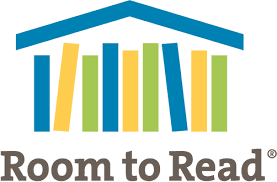
🔎
Their transparency & ratings:
Room to Read has a 4-star rating from Charity Navigator and holds the Platinum Seal of Transparency from GuideStar.
“We fight for a world in which all children can pursue a quality education that prepares them to lead fulfilled lives and make positive change in their families, communities and the world.”
Room to Read
⚒️
What they do:
Room to Read delivers developmentally appropriate, engaging children’s books for early readers to advance their literacy skills. They also work to develop a love for reading by providing disadvantaged children with libraries and instructional materials like literacy textbooks. In addition, they advance education in low-income countries by running child-friendly learning spaces and giving high-impact training to local teachers and librarians. Moreover, they provide disadvantaged girls with life skills education and material support to finish secondary school and have the tools to solve community-wide issues.
🚀
What they’ve achieved:
Since their founding, Room to Read has impacted 35.5 million children from 182,000 schools in 20 developing countries through their Literacy Program. They have also distributed 39 million books in 23 countries and translated them into 50 languages to improve children’s reading and writing skills. In addition, they supported the education of 3.4 million girls from 10 low-income countries, with 97% of them graduating from secondary school. Moreover, in 2022, they trained 277,000 teachers and librarians to create child-friendly classrooms and make learning more appealing to children.
✨
Ways to contribute:
You can donate to Room to Read on their website. You can also support them by applying to volunteer or subscribing to email updates about their latest successes.
Varkey Foundation: Changing Lives Through Education
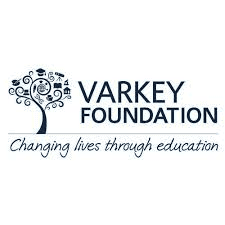
🔎
Their transparency & ratings:
According to their financial report, the Varkey Foundation spent 100% of their total income on charitable activities.
“We believe in a quality education for every child, and that every child, everywhere, deserves a good teacher.”
Varkey Foundation
⚒️
What they do:
The Varkey Foundation runs programs in Ghana, Uganda, and Argentina to improve access to literacy, numeracy, and science classes. With this, they empower vulnerable girls and refugee children to improve their livelihoods. They also equip teachers with the skills, knowledge, and tools to improve standards of education and make classrooms an inspiring place to learn. In addition, they use satellite technology, distance learning tools, and solar-powered technology to connect with pupils in low-income countries and improve teaching curriculums and practices.
🚀
What they’ve achieved:
To date, the Varkey Foundation has trained 46,000 teachers in thousands of schools and improved education for millions of children. For example, in Argentina and Uganda, they have provided in-depth teaching training to 35,000 teachers and local leaders from 5,800 schools, thus impacting 1.1 million pupils. Furthermore, they have supported 37,000 Ghanaian female students from 88 schools with interactive learning sessions and distance learning infrastructure. They have also developed a $2 million remote teacher training project reaching 4,200 teachers and 90,000 pupils.
✨
Ways to contribute:
You can support the Varkey Foundation by following their Twitter and Facebook profiles.
Pratham: Every Child In School and Learning Well
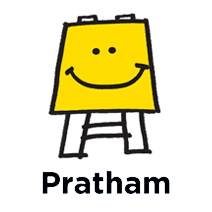
🔎
Their transparency & ratings:
Pratham has a 4-star rating from Charity Navigator and holds the Platinum Seal of Transparency from GuideStar.
“Universal literacy is our first and foremost goal and we believe every child has the right to a quality education. We fight to solve India’s learning crisis.”
Pratham
⚒️
What they do:
Pratham works with three to six-year-olds on their language, cognitive, and social development while helping elementary schoolers improve their reading and math learning outcomes. In addition, they run Literacy classes for adolescents and provide school dropouts with another chance at education. They also keep children protected from child labor and trafficking to help them stay in school. Furthermore, they help children learn from digital devices to boost the education of hard-to-reach pupils and run tailored educational curriculums for girls to empower their financial independence.
🚀
What they’ve achieved:
Since their founding, Pratham has helped 36,000 female student dropouts finish their education and earn a dignified living. Also, in 2020, during the COVID pandemic, they provided 600,000 students from 12,000 communities with educational materials. In the same year, they invested over $17 million in educational programs to serve India’s children. Furthermore, in 2023, they reached over 1 million pupils from 23 Indian states with educational activities, from preschool to the end of high school.
✨
Ways to contribute:
You can donate to Pratham on their website. You can also contribute by volunteering or by organizing a visit to India to see their programs in action.
Save the Children: Every Child Should Benefit From a Quality Basic Education
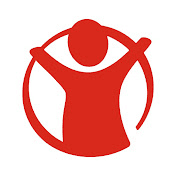
🔎
Their transparency & ratings:
Save the Children has a 4-star rating from Charity Navigator and holds the Platinum Seal of Transparency from GuideStar.
“Millions of children are denied an education and other basic rights owed to them. We believe every child deserves a future and are putting the most vulnerable children first.”
Save the Children
⚒️
What they do:
Save the Children supports children’s education from the first years of life by creating stimulating preschool environments, keeping children healthy, and taking teaching materials into families. They also run literacy programs for young children to help them learn to read by third grade and empower girls by delivering girl-centered curriculums. In addition, they help children master numeracy and other mathematics skills to improve their work and daily life. Moreover, they assist with nutrition and hygiene practices, as well as disaster relief, to ensure children don’t have their education interrupted or ended early.
🚀
What they’ve achieved:
To date, Save the Children has delivered education to 273 million children – more than any other global development organization. In this way, they have reduced the global number of out-of-school children by one-third, resulting in 180 million more children getting the education they deserve. For example, they have helped 4 million children from 30 developing countries to develop literacy skills and have hygienic school environments. Also, in 2022, they helped 9 million at-risk youth access education, including 4.5 million girls, by providing financial aid, child protection interventions, and proper nutrition.
✨
Ways to contribute:
You can donate to Save the Children on their website. You can also contribute by volunteering, advocating for their causes, or starting a Facebook fundraiser.
Pencils of Promise: Empowering Communities Through Education
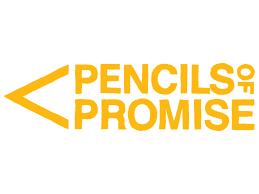
🔎
Their transparency & ratings:
Pencils of Promise has a 4-star rating from Charity Navigator and holds the Platinum Seal of Transparency from GuideStar.
“We’re a global community that believes everyone deserves access to quality education. So we are reshaping the landscape of education.”
Pencils of Promise
⚒️
What they do:
Pencils of Promise builds classrooms in partnership with public school systems in Ghana, Guatemala, and Laos to ensure that students have access to a safe and welcoming place to learn. Also, to support high-quality education for students, they support public school teachers with training and innovative resources such as e-readers, empowering them to lead dynamic and effective lessons. In addition, they provide children with access to clean water, private bathrooms, and good hygiene practices to foster their development by keeping them healthy and in school.
🚀
What they’ve achieved:
To date, Pencils of Promise has ensured the education of more than 252,000 students from Ghana, Guatemala, and Laos. For example, they have built 605 schools across 1,200 communities which helped enroll 131,000 hard-to-reach youth. In addition, they have installed over 1,000 water filters and sanitation systems in 170 schools to make 32,000 students stay healthy and continue their education. Furthermore, they trained 3,000 local teachers through 331 workshops and 20,000 coaching sessions to offer engaging and impactful education to their pupils.
✨
Ways to contribute:
You can donate to Pencils of Promise on their website. You can also get involved by starting an online fundraising campaign or spreading the word about their work.
Smile Foundation: Education is Empowerment
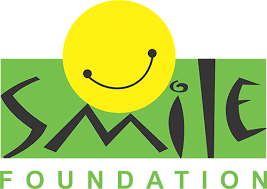
🔎
Their transparency & ratings:
The Smile Foundation holds the Platinum Seal of Transparency from GuideStar India.
“We believe that education is the most effective tool for children to build a strong foundation – enabling them to get free from the vicious cycle of ignorance, poverty, and disease.”
Smile Foundation
⚒️
What they do:
The Smile Foundation provides quality education to Indian youth to indirectly improve nationwide healthcare, poverty, unemployment, and human rights. For this, they advance school infrastructure to use renewable energy sources while setting up science labs, libraries, and modernized classrooms. They also implement new school curriculums to contain in-depth STEM classes, digital literacy, and nutrition support. Furthermore, they train local teachers to master effective learning methods and digital tools to improve students’ learning and social well-being.
🚀
What they’ve achieved:
Since their founding, the Smile Foundation has implemented 261 projects across 23 Indian states to educate 300,000 Indian youth and improve their livelihoods. For example, in 2023 alone, their educational programs reached 120,000 students with quality curriculums and learning materials. In the same year, they supported 44,000 girls to stay in school and receive vocational training to increase their future career prospects. In addition, they improved school infrastructure for 25,000 pupils and funded 2,000 scholarships for higher studies.
✨
Ways to contribute:
You can donate to the Smile Foundation on their website. In addition, you can become a corporate partner or join an internship or volunteering opportunity.
Seeds of Learning: Education From the Ground Up
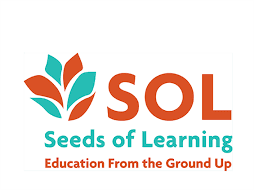
🔎
Their transparency & ratings:
Seeds of Learning has a 4-star rating from Charity Navigator.
“We promote conditions and opportunities for quality learning in developing communities of the Americas.”
Seeds of Learning
⚒️
What they do:
Seeds of Learning collaborates with rural communities in Central America to build school classrooms and other needed infrastructure. They bring building materials and supervise the construction process, while community members provide labor and organizational support. They also aid underprivileged schools by developing Learning Resource Centers with educational materials, such as libraries, tutoring programs, and craft activities. In addition, they fund holistic scholarships to impoverished rural students, covering school supplies, uniforms, or university tuition.
🚀
What they’ve achieved:
Since their founding, Seeds of Learning has continued to support education in low-income Central American countries. For example, in 2018, their Learning Resource Centers received almost 100,000 visits from teachers and students. Moreover, in 2024, they helped 1,000 students participate in educational classes and involved 826 youth in a countrywide reading campaign. In the same year, they built 12 new school buildings and offered 71 scholarships to students at the primary, secondary, and university levels to help them complete their education.
✨
Ways to contribute:
You can donate to Seeds of Learning on their website. In addition, you can buy their merchandise or volunteer for a workgroup to travel to Central America and help students learn.
United World Schools: When You Educate the Future, You Change the Future
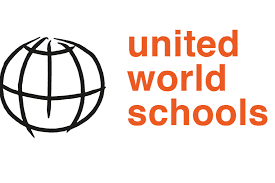
🔎
Their transparency & ratings:
United World Schools holds the Platinum Seal of Transparency from GuideStar.
“We deliver schools, we train teachers, and we strengthen education systems. We educate like the future depends on it. Because it does.”
United World Schools
⚒️
What they do:
United World Schools shapes curriculums and strengthens infrastructure to give marginalized children sustainable access to high-quality education that provides safe and inclusive learning. For instance, they build schools that fit in the local context and standard, like earthquake-proof designs in Nepal and schools that double-up as cyclone shelters in Madagascar. They also develop tailored teaching curriculums that fight poverty, strengthen local economies, and support students’ health. For this, they employ and train teachers from the local community to deliver impactful, inclusive education.
🚀
What they’ve achieved:
Since their founding, United World Schools has improved education in Nepal, Cambodia, Myanmar, and Madagascar. There, they have helped 64,000 youth enroll as students in 311 newly-built schools. Also, they have trained and employed 1,400 teachers. Moreover, in Nepal, they have built 505 earthquake-resilient classrooms in 60 schools, giving 11,500 students access to safe education. Furthermore, in 2023, they started a girls’ education project in Cambodia and Nepal that reached 11,000 female students in 160 communities.
✨
Ways to contribute:
You can donate to United World Schools on their website. You can also get involved by doing a school-wide fundraiser or by applying for a job.
Fields of Life: Changing Lives, Building Hope
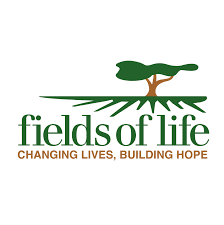
🔎
Their transparency & ratings:
According to their financial report, Fields of Life spent 84% of their total income on charitable services, 15% on fundraising costs, and 1% on governance fees.
“We believe that brilliance is equally distributed, but opportunity is not. Our vision is to see educated and skilled young people, inspired by hope and love, transform their communities.”
Fields of Life
⚒️
What they do:
Fields of Life supports partner schools to ensure a safe and quality learning environment for all students. For this, they provide learning materials and professional development by giving teacher training and financial aid. They also build school infrastructure and develop sustainable school feeding programs so schools can grow their own food. In addition, they keep students healthy by implementing sanitation in schools and teaching menstrual hygiene. Furthermore, they offer vocational training and scholarships to serve young adults who missed out on their education.
🚀
What they’ve achieved:
Since their founding, Fields of Life has built 127 schools in Uganda, Rwanda, and South Sudan. For example, in 2023, they served 73,000 children in their education journey and invested $2 million in quality learning programs. In the same year, they built 920 water wells and provided improved sanitation systems and healthcare to 31,000 students. Moreover, they founded a Vocational Training Institute to support 450 young adults who didn’t complete their education to start careers in carpentry, tailoring, or construction building, among others.
✨
Ways to contribute:
You can donate to Fields of Life on their website. You can also contribute by shopping through their online store or by sponsoring a child’s education journey.
Keep Children in School Foundation: Breaking the Cycle of Poverty
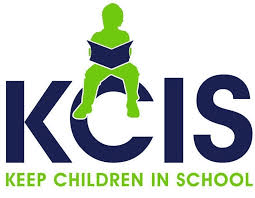
🔎
Their transparency & ratings:
The Keep Children in School Foundation has a 3-star rating from Charity Navigator and holds the Platinum Seal of Transparency from GuideStar.
“We fight to break the cycle of generational poverty through the transformative power of education. We want equal access to quality education to be not a privilege, but a fundamental right.”
Keep Children in School Foundation
⚒️
What they do:
The Keep Children in School Foundation grants scholarships for economically struggling students to cover tuition fees, academic equipment, or medical services. In addition, they serve Iranian child refugees by collaborating with local schools to provide tailored educational curriculums. Moreover, their Beyond Education Program provides opportunities beyond the limits of conventional schooling where educational resources are limited. For instance, they teach reading skills and computer literacy, as well as coding and web design.
🚀
What they’ve achieved:
Since their inception, the Keep Children in School Foundation has continued to educate underserved Iranian youth. For example, their Beyond Education Program has reached 22,000 students with innovative methods to receive quality education. They also served 3,000 hard-to-reach students by developing an Android-based app to help eradicate illiteracy in Persian-speaking countries. In addition, they served 4,700 Iranian refugee students and provided 2,000 scholarships to help disadvantaged youth continue their education.
✨
Ways to contribute:
You can donate to the Keep Children in School Foundation on their website. You can also contribute by creating a fundraising event or becoming a volunteer.
How Can You Select the Best Charities to Support?
The charities on the list are, we deem, the best charities for education in developing countries. However, you may have a particular charity you want to support. Let’s look at what you can do to ensure your contribution has the most significant impact.
- Check out the charity website. Charities that are worthy of your donations are transparent in their mission and their figures. Familiarize yourself with their history, mission, and values. Their website usually is the best place to start.
- Identify the charity’s mission. Without a goal, the charity is likely to fail. If the charity’s mission isn’t clear, it’s probably worth looking for a charity that does have a clear mission.
- Check if the charity has measurable goals. An effective charity has clear goals. You want to know your donation will help the charity reach its goals. But if it doesn’t have targets, it’s likely to fail or squander your gift. The charity should be able to account for its spending and supply evidence of the work they do.
- Assess the successes or goals the charity has achieved. You wouldn’t invest in a business if it kept missing its targets. In the same way, charities are like this too. If no one is assessing a charity’s progress in reaching its targets, the chances are they’re not making a substantial positive change.
- Check the charity’s financials and stats. Trustworthy organizations will publish financial statements and reports each year. Some might be exempt from having to do so, but they should be able to provide them to public members who are interested in donating.
- Locate sources who work with or benefit from the charity. Word of mouth and first-hand experience of a charity’s work lets you know the charity’s quality. If you’re able to do so, check out the charity for yourself or speak to someone familiar with it. This way, your donation will go to the right place.
How Can You Best Support These Charities?
After you’ve made your decision, it’s time for you to decide on how you’d like to help the charities you’ve chosen. Check how you can help – each charity runs specific programs that have unique aims. Find out what the aim of such programs is and whether they are right for you.
Here are a few ways you can help your chosen charity:
- Donate money. You can find donation pages on the website of most charities. Your donation can be a one-time payment, or you can set it to be deducted regularly at different intervals. You can mostly pay via credit card, but some charities also take PayPal or Bitcoin payments.
- Buy their official merchandise. Charities can also raise money by selling merchandise. So, you can support them by buying the mugs, shirts, caps, pens, pencils, and any other such items they may be selling. Ideally, you should buy as much as you can to share and spread the word about the charity’s activities.
- Engage in volunteer work. As you’ve seen from our descriptions above, some charities engage in a lot of local and grassroots programs. You can help by taking on and organizing the program in your local area.
- Help their fundraising efforts. You can spread the word about the charity in your workplace, school, church, etc., and hold creative fundraising drives on social media or offline within your small circles.
- Share their stories. Most charities have compelling stories that you can share with your audience to attract more people to the cause.
Final Thoughts
Now it is up to you to select the charity that resonates most with you. And whichever charity you end up choosing and contributing to, we are sure that they will immensely appreciate your support. Hopefully, the information within this article has made this selection process a bit easier for you to support charities dedicated to education in developing countries—based on the causes that matter most to you.
Stay impactful,

PS: Finally, I want to leave you with a thought-provoking TED talk from Dan Pallotta, a leading philanthropic activist and fundraiser, about what is wrong with the way we think about charities – and what we can do about it:
Sources
- UNESCO: 250 million children out-of-school: What you need to know about UNESCO’s latest education data
- Firstpost: Over 800 million youths will be unemployed by 2030 without new education funds: UN envoy
- Room to Read: home page
- Charity Navigator: Room to Read
- GuideStar: Room to Read
- Room to Read: publishing
- Room to Read: quality reading materials
- Room to Read: child-friendly learning spaces
- Room to Read: teacher training
- Room to Read: girls’ education
- Room to Read: literacy and girls’ education
- Room to Read: impact and reach
- Room to Read: donate
- Room to Read: volunteer
- Room to Read: subscription
- The Varkey Foundation: home page
- The Varkey Foundation: financial report
- The Varkey Foundation: what we do
- The Varkey Foundation: girls’ education
- The Varkey Foundation: refugee education
- The Varkey Foundation: teacher training
- The Varkey Foundation: education technology
- The Varkey Foundation: programmes
- The Varkey Foundation: our reach and impact
- The Varkey Foundation: Train for Tomorrow, Ghana
- The Varkey Foundation: Twitter profile
- The Varkey Foundation: Facebook profile
- Pratham: home page
- Charity Navigator: Pratham
- GuideStar: Pratham
- Pratham: early childhood education
- Pratham: elementary years
- Pratham: literacy and learning
- Pratham: second chance
- Pratham: The Pratham Council for Vulnerable Children
- Pratham: digital initiatives
- Pratham: girls’ education
- Pratham: 2020 annual report
- Pratham: 2023 annual report
- Pratham: donate
- Pratham: volunteer in the USA
- Pratham: Visit a Pratham Program in India and see your gifts in action
- Save the Children: home page
- Charity Navigator: Save the Children
- GuideStar: Save the Children
- Save the Children: early childhood development
- Save the Children: learning
- Save the Children: children’s literacy program
- Save the Children: girls’ education
- Save the Children: Children’s Math Programs – Numeracy Boost
- Save the Children: school health and nutrition
- Save the Children: education
- Save the Children: 2022 annual report
- Save the Children: donate
- Save the Children: become a volunteer
- Save the Children: advocate for children
- Save the Children: start a Facebook fundraiser
- Pencils of Promise: home page
- Charity Navigator: Pencils of Promise
- GuideStar: Pencils of Promise
- Pencils of Promise: school builds
- Pencils of Promise: teacher support
- Pencils of Promise: our work
- Pencils of Promise: WASH
- Pencils of Promise: our founding story
- Pencils of Promise: donate
- Pencils of Promise: campaign
- Pencils of Promise: spreading the word
- The Smile Foundation: home page
- GuideStar India: The Smile Foundation
- The Smile Foundation: education programs
- The Smile Foundation: our story
- The Smile Foundation: reach and presence
- The Smile Foundation: livelihood
- The Smile Foundation: impact
- The Smile Foundation: donate
- The Smile Foundation: volunteer
- The Smile Foundation: corporate partnerships
- Seeds of Learning: home page
- Charity Navigator: Seeds of Learning
- Seeds of Learning: community building projects
- Seeds of Learning: our Learning Resource Centers
- Seeds of Learning: our Scholarships
- Seeds of Learning: about us
- Seeds of Learning: 2023 annual report
- Seeds of Learning: donate
- Seeds of Learning: our online shop
- Seeds of Learning: APPLY TO A SOL WORK GROUP
- Seeds of Learning: our programs
- United World Schools: home page
- GuideStar: United World Schools
- United World Schools: our approach
- United World Schools: access
- United World Schools: quality
- United World Schools: building schools
- United World Schools: running schools
- United World Schools: teacher training
- United World Schools: inclusion
- United World Schools: Nepal
- United World Schools: Cambodia
- United World Schools: Myanmar
- United World Schools: Madagascar
- United World Schools: impact
- United World Schools: annual report 2023
- United World Schools: donate
- United World Schools: fundraise as a school
- United World Schools: vacancies
- Fields of Life: home page
- Fields of Life: financial report
- Fields of Life: sponsor a child
- Fields of Life: education
- Fields of Life: water
- Fields of Life: I AM GIRL
- Fields of Life: vocational training institute
- Fields of Life: vocational sponsorship
- Fields of Life: about us
- Fields of Life: Why East Africa
- Fields of Life: 2023 annual report
- Fields of Life: donate
- Fields of Life: our online shop
- Fields of Life: sponsor our children
- The Keep Children in School Foundation: home page
- Charity Navigator: The Keep Children in School Foundation
- GuideStar: The Keep Children in School Foundation
- The Keep Children in School Foundation: student scholarships
- The Keep Children in School Foundation: schools for Afghan Students
- The Keep Children in School Foundation: Beyond Education Program
- The Keep Children in School Foundation: our achievements
- The Keep Children in School Foundation: digital literacy application
- The Keep Children in School Foundation: donate
- The Keep Children in School Foundation: dedicate an event
- The Keep Children in School Foundation: become a volunteer

